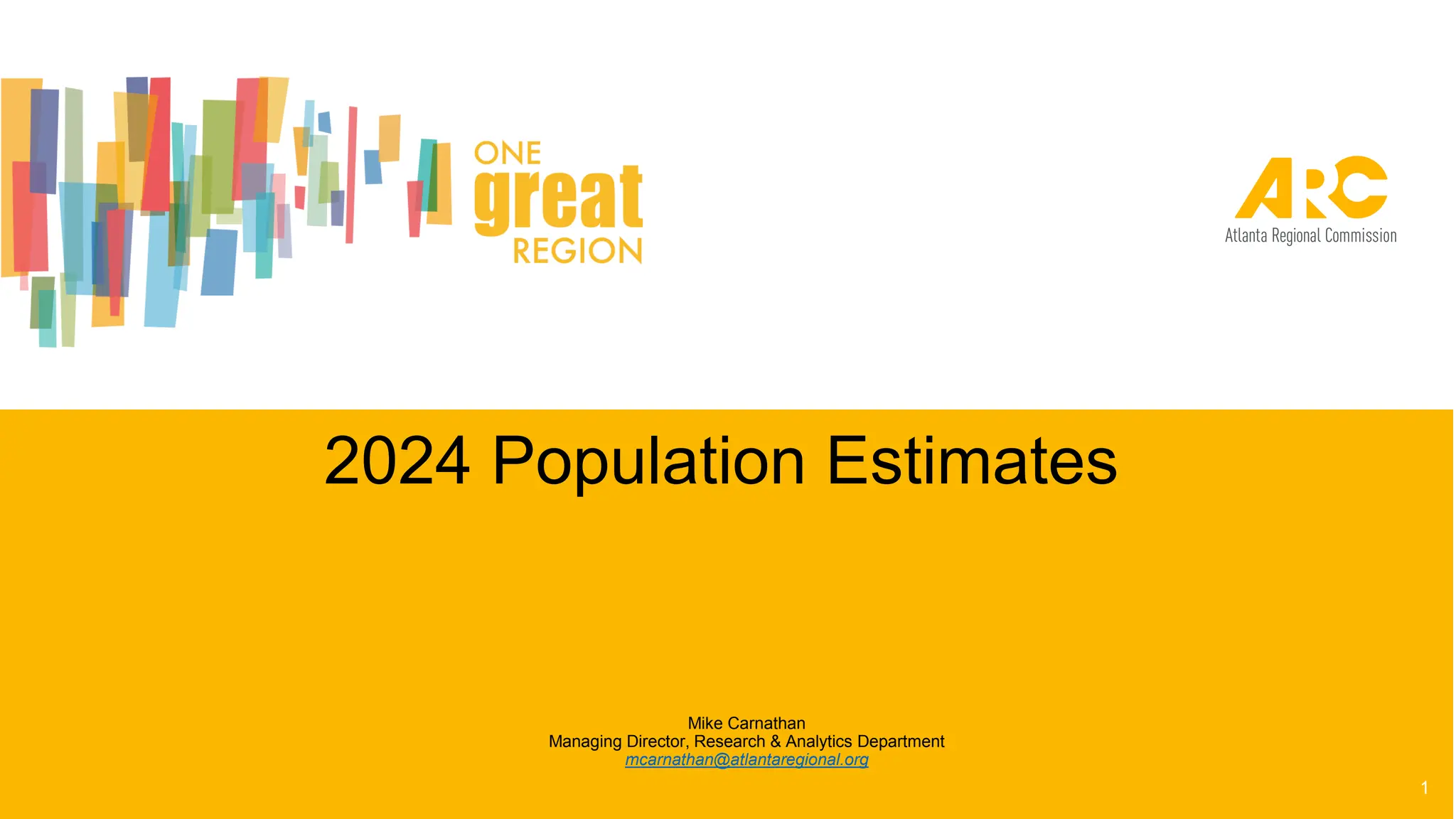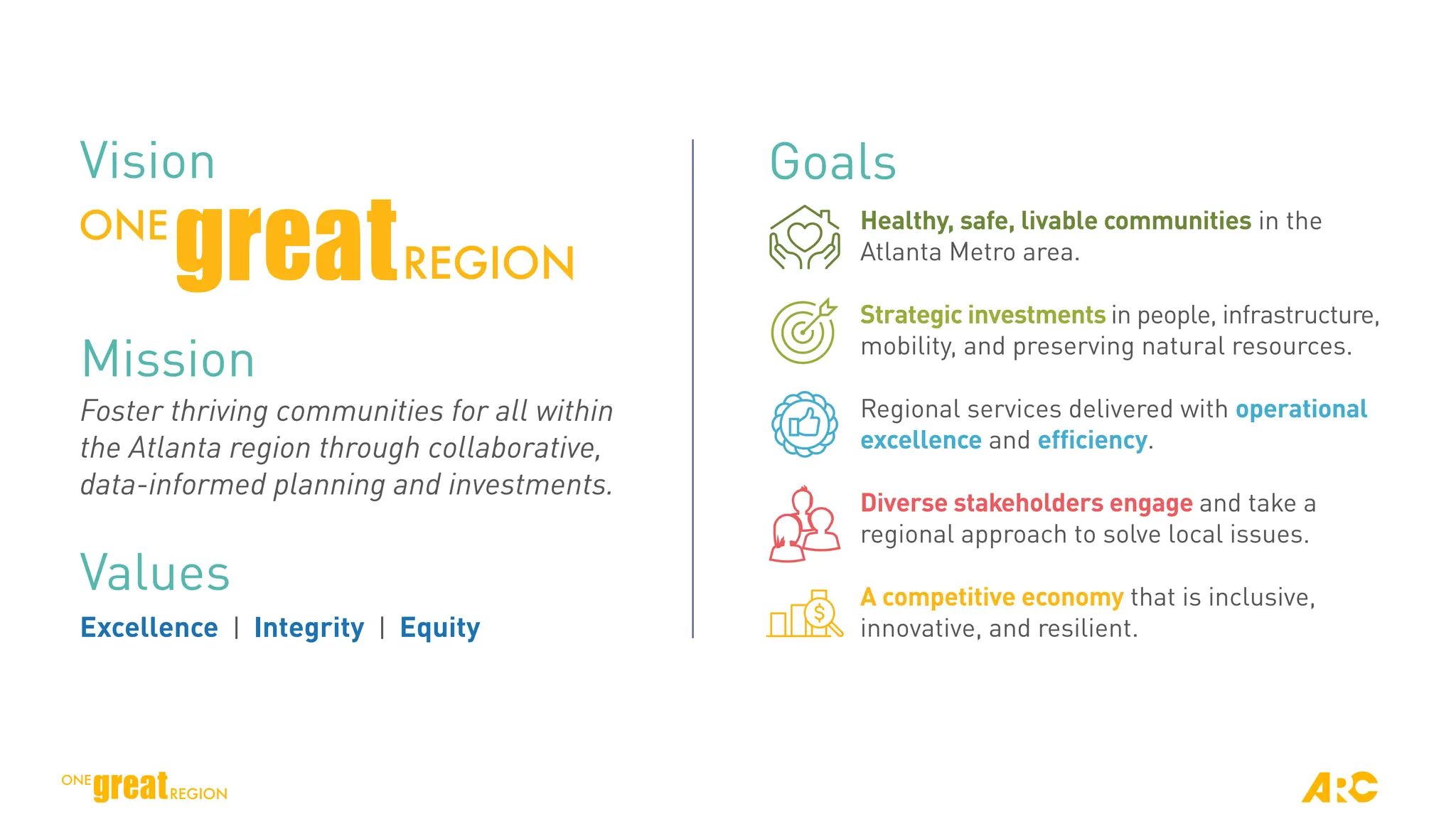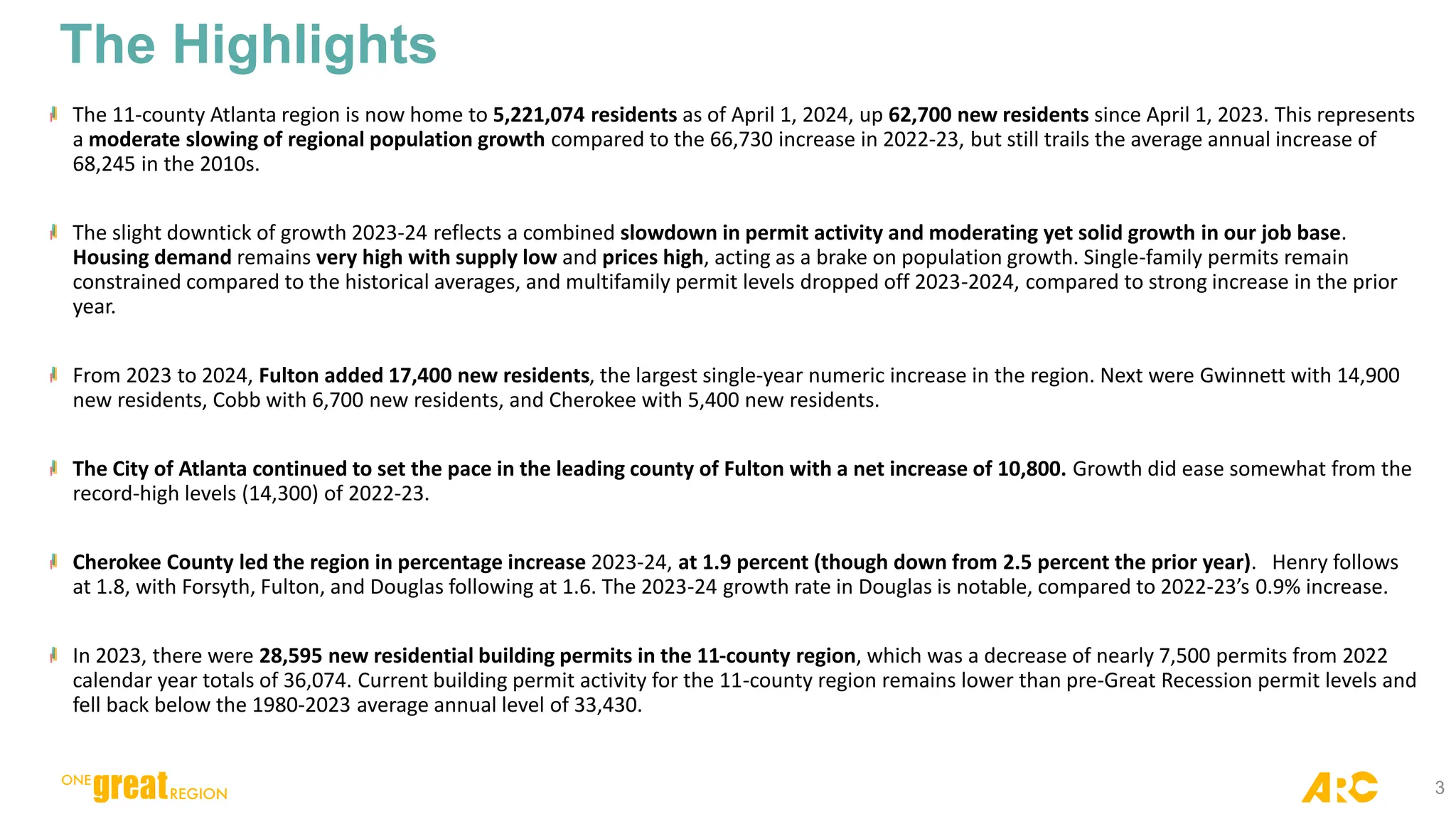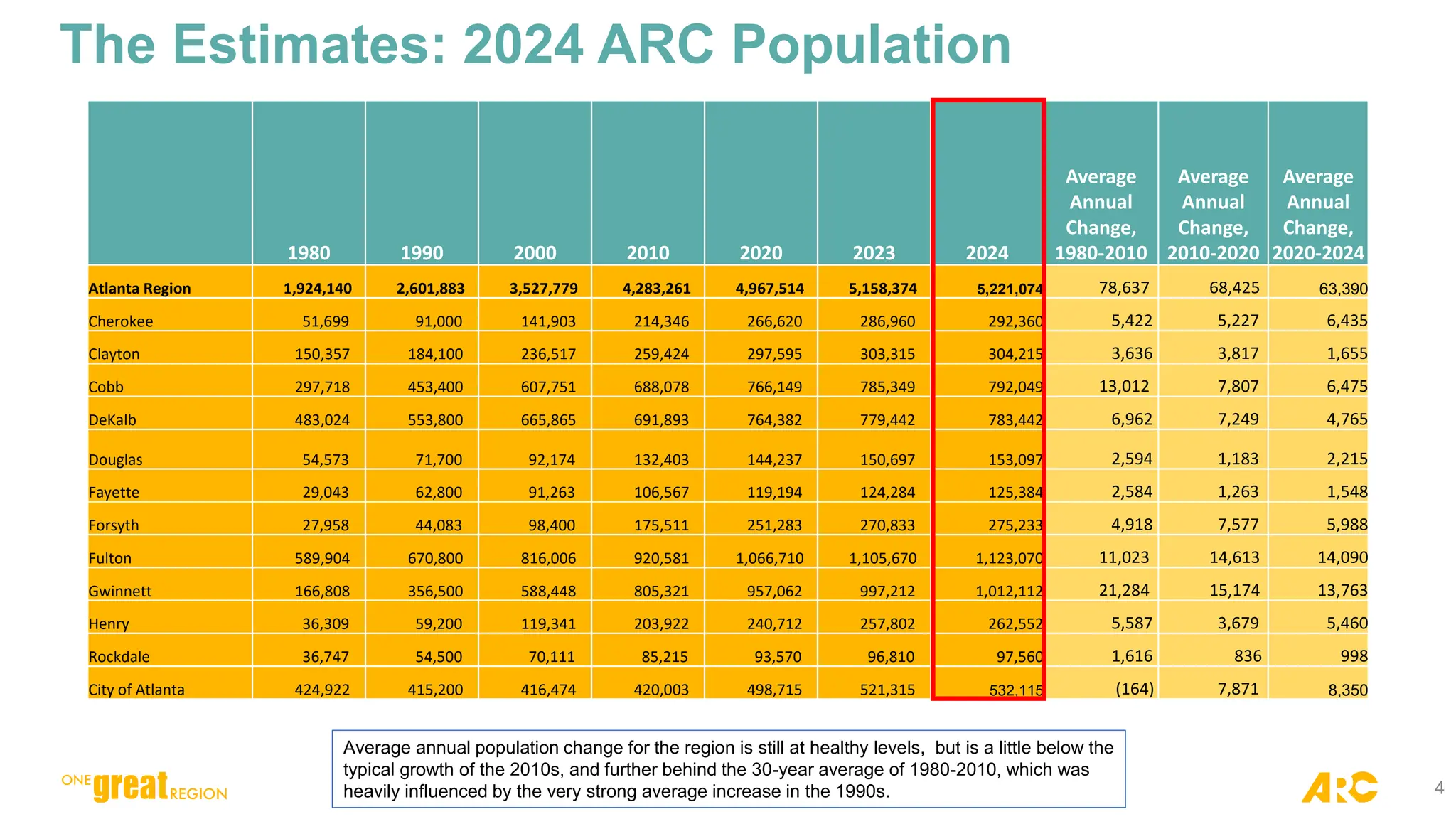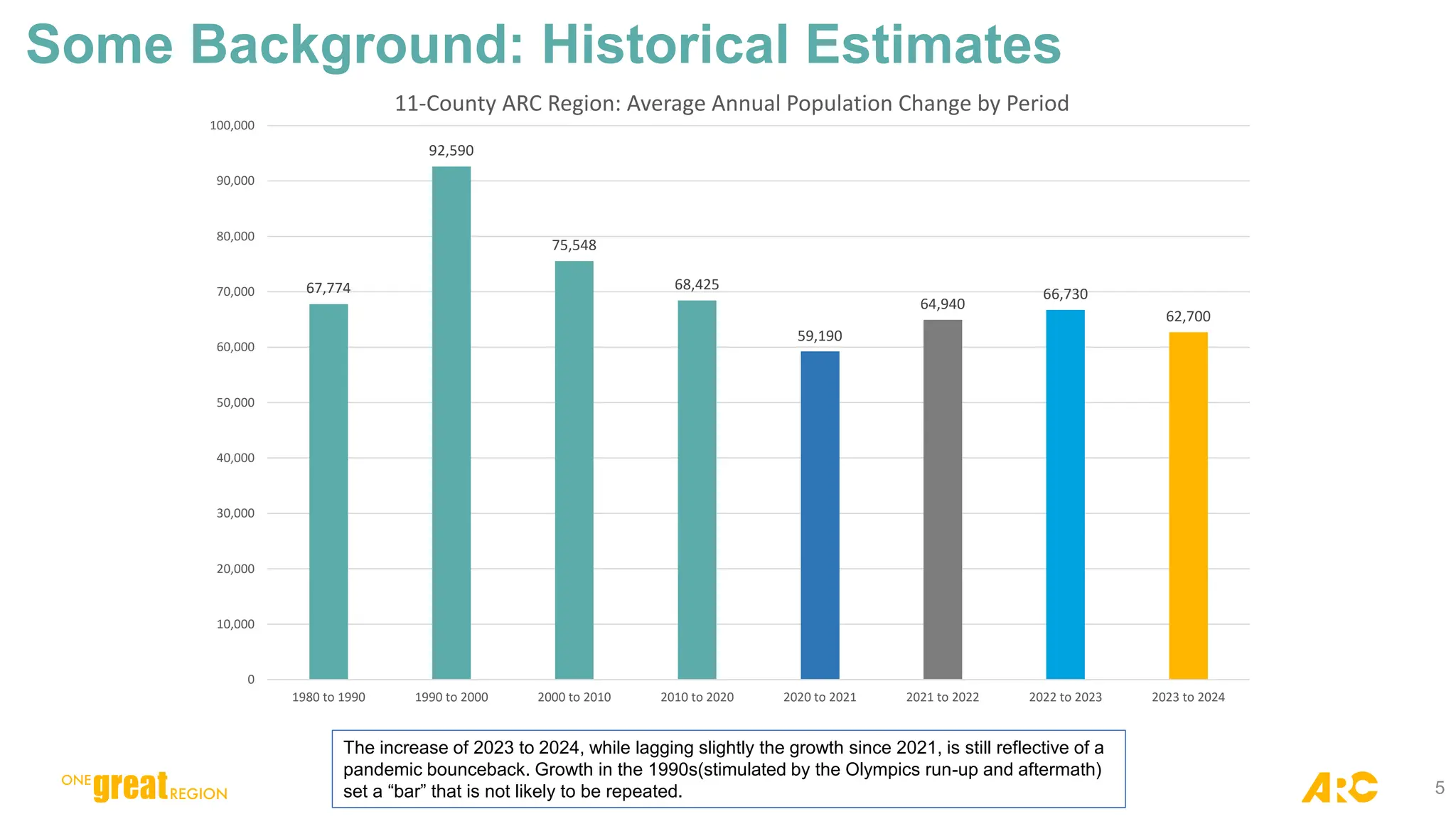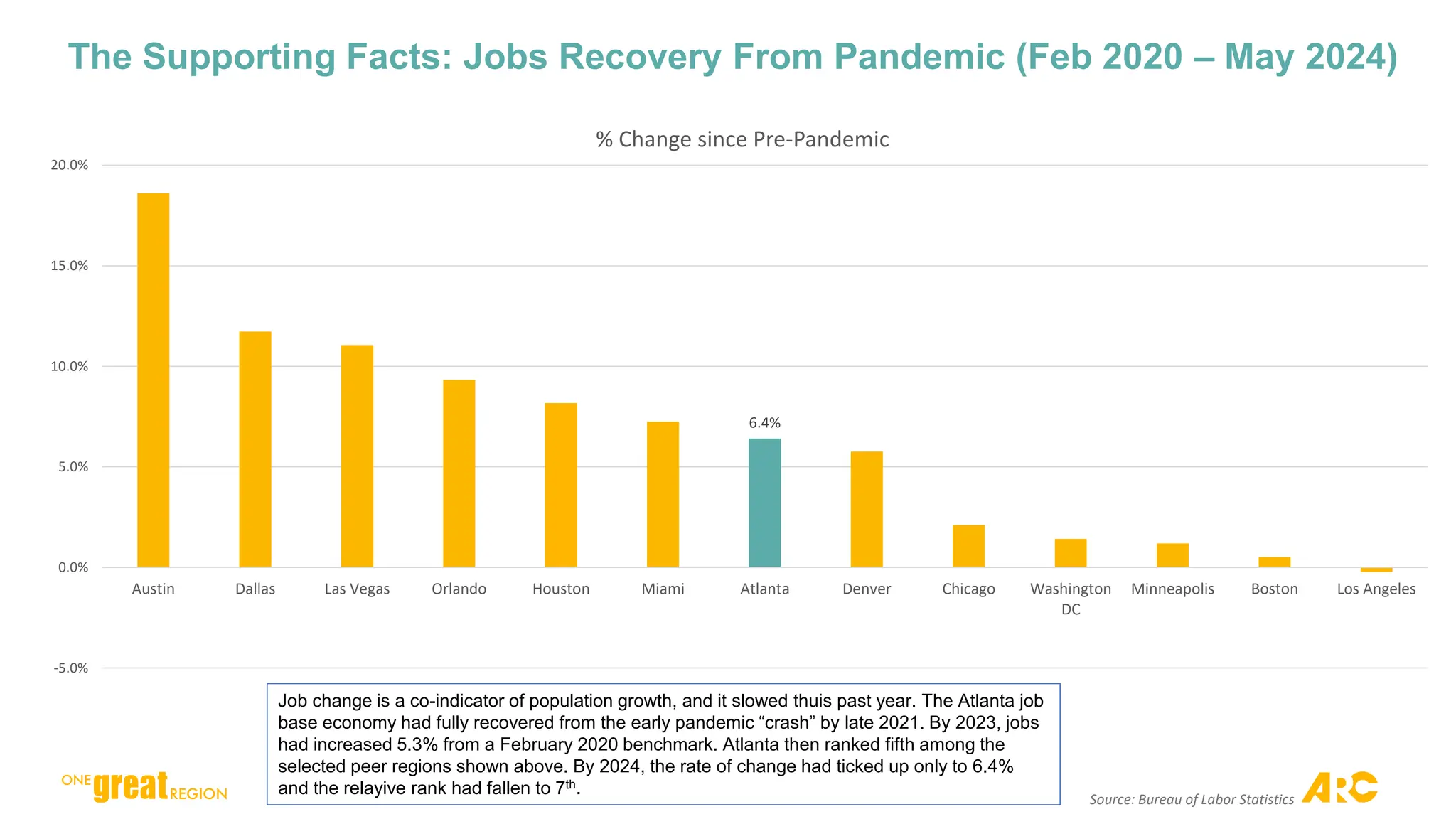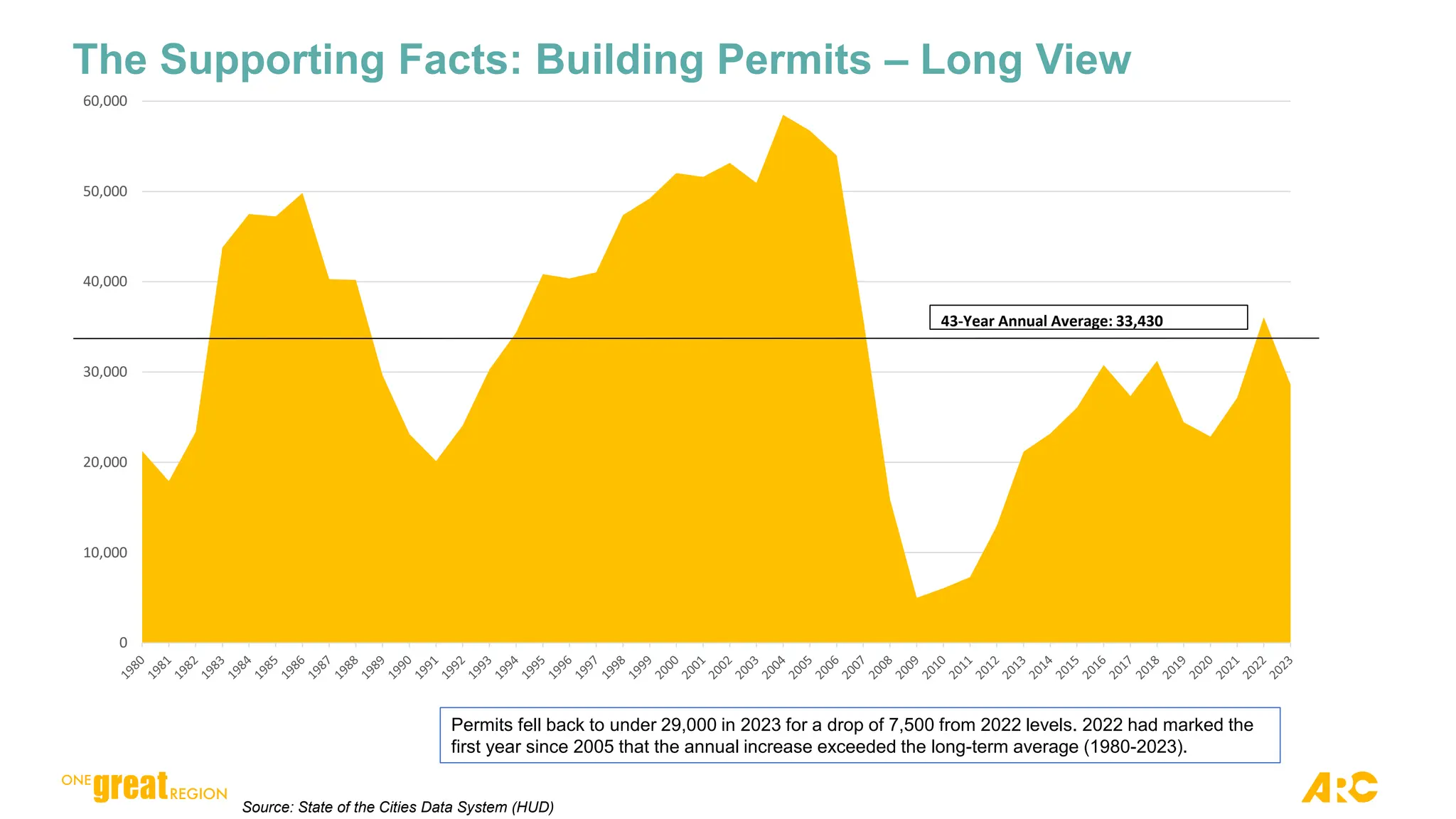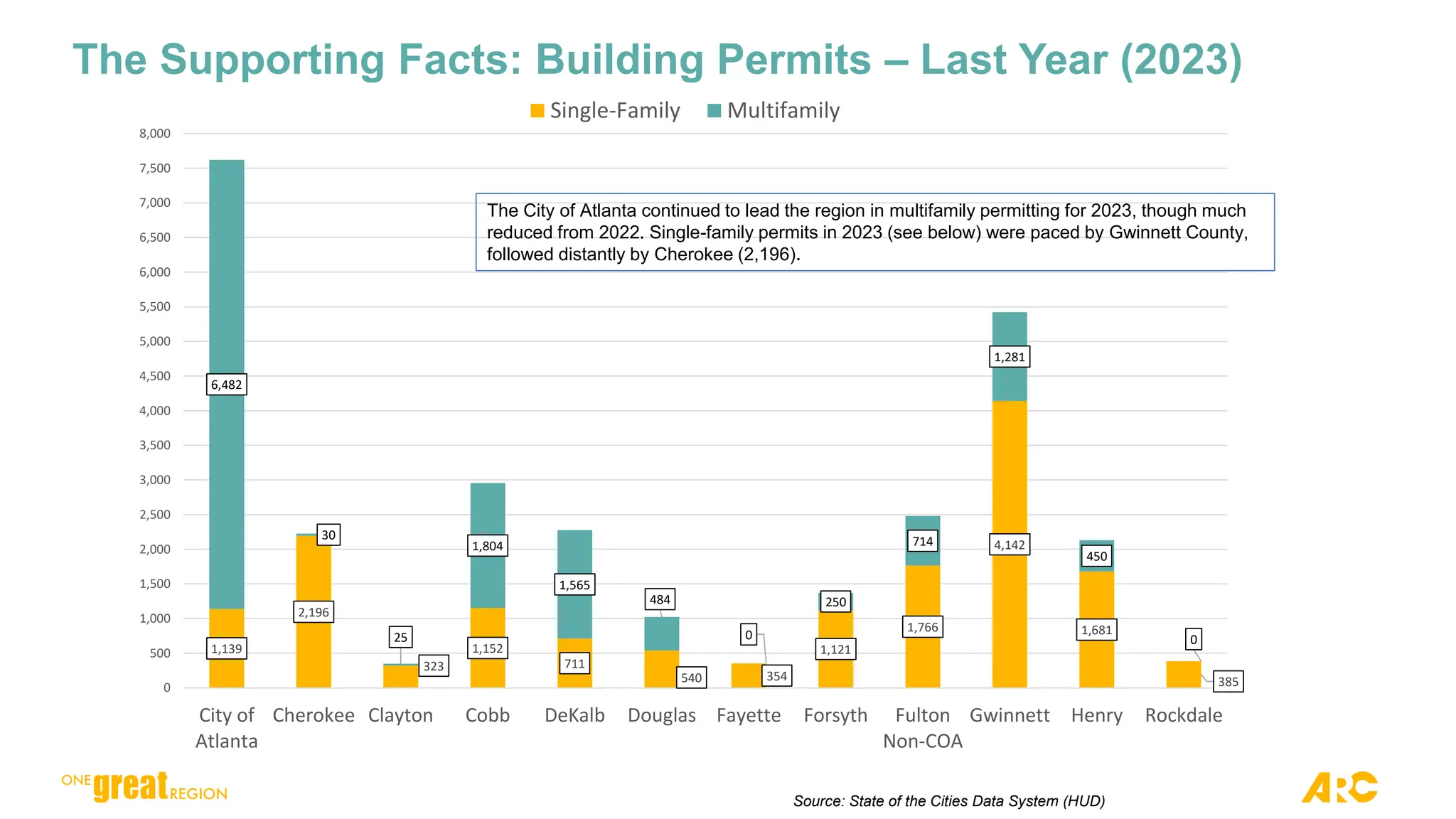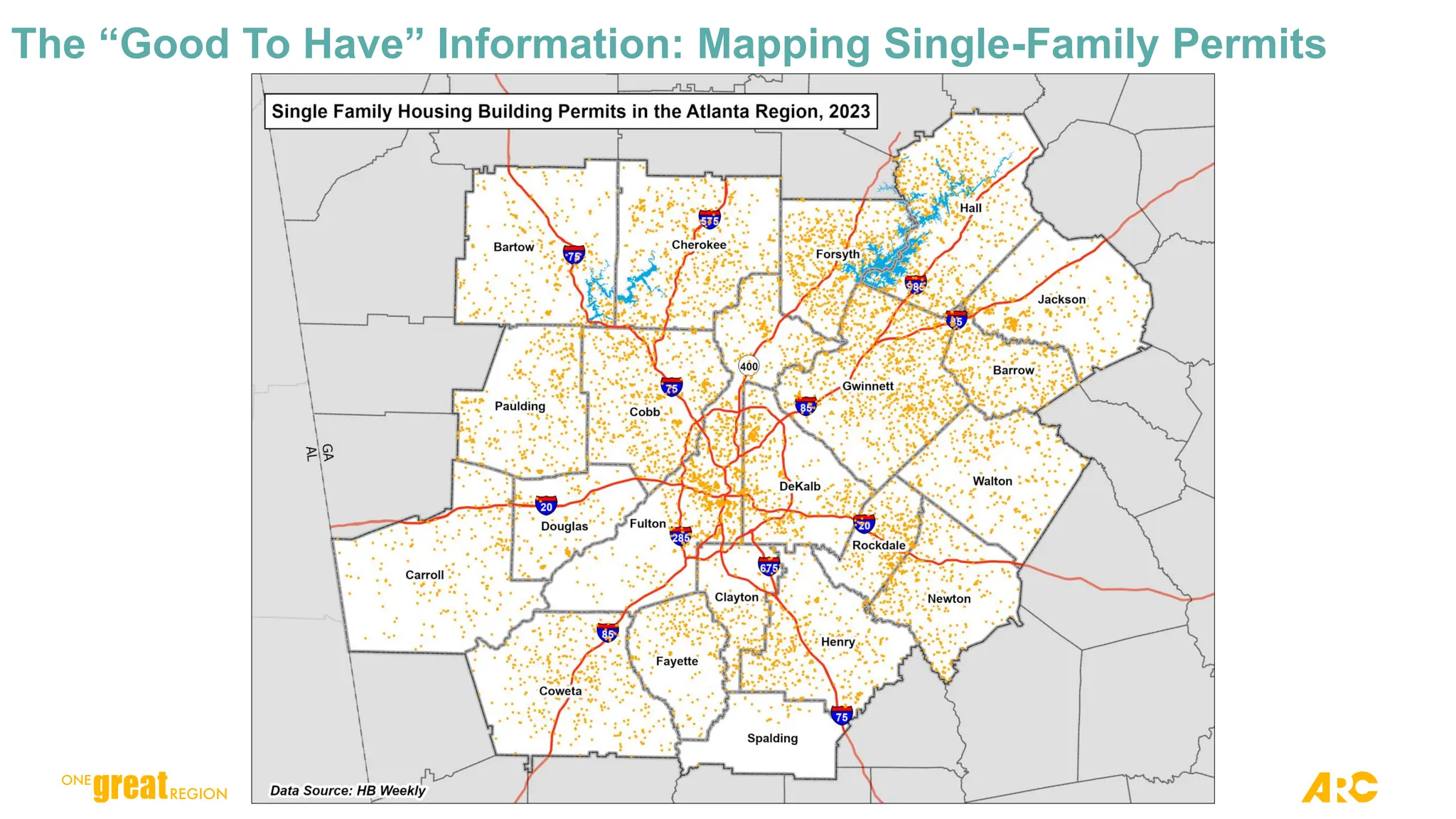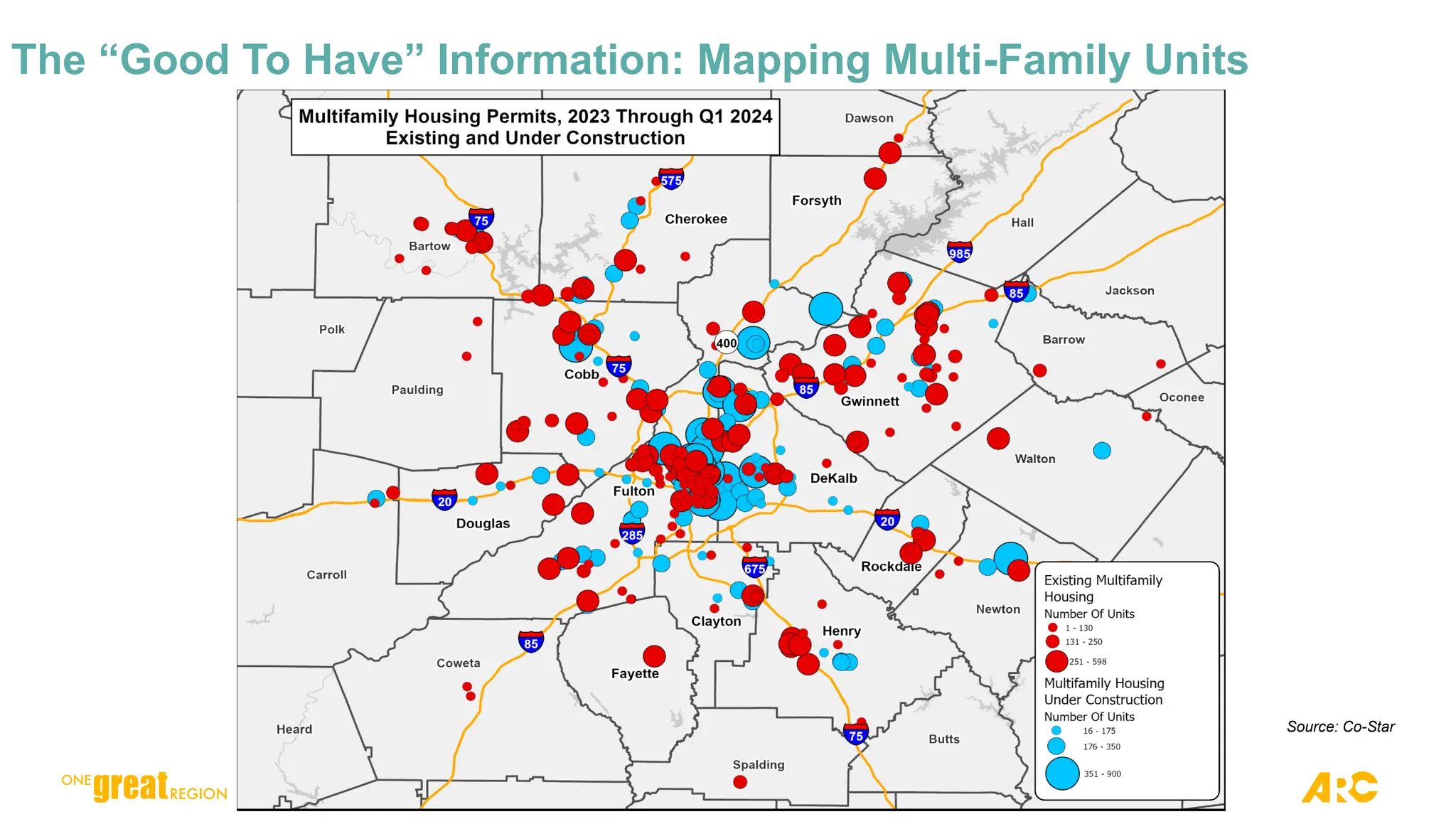As of April 1, 2024, the 11-county Atlanta region's population reached 5,221,074, reflecting a growth of 62,700 residents from the previous year, although this growth has moderated compared to past years. Factors such as high housing demand combined with low supply and elevated prices have impeded further population growth, leading to a decline in building permits for new residential construction. Fulton County experienced the highest numeric increase with 17,400 new residents, and Cherokee County led in percentage growth at 1.9% from 2023 to 2024.
